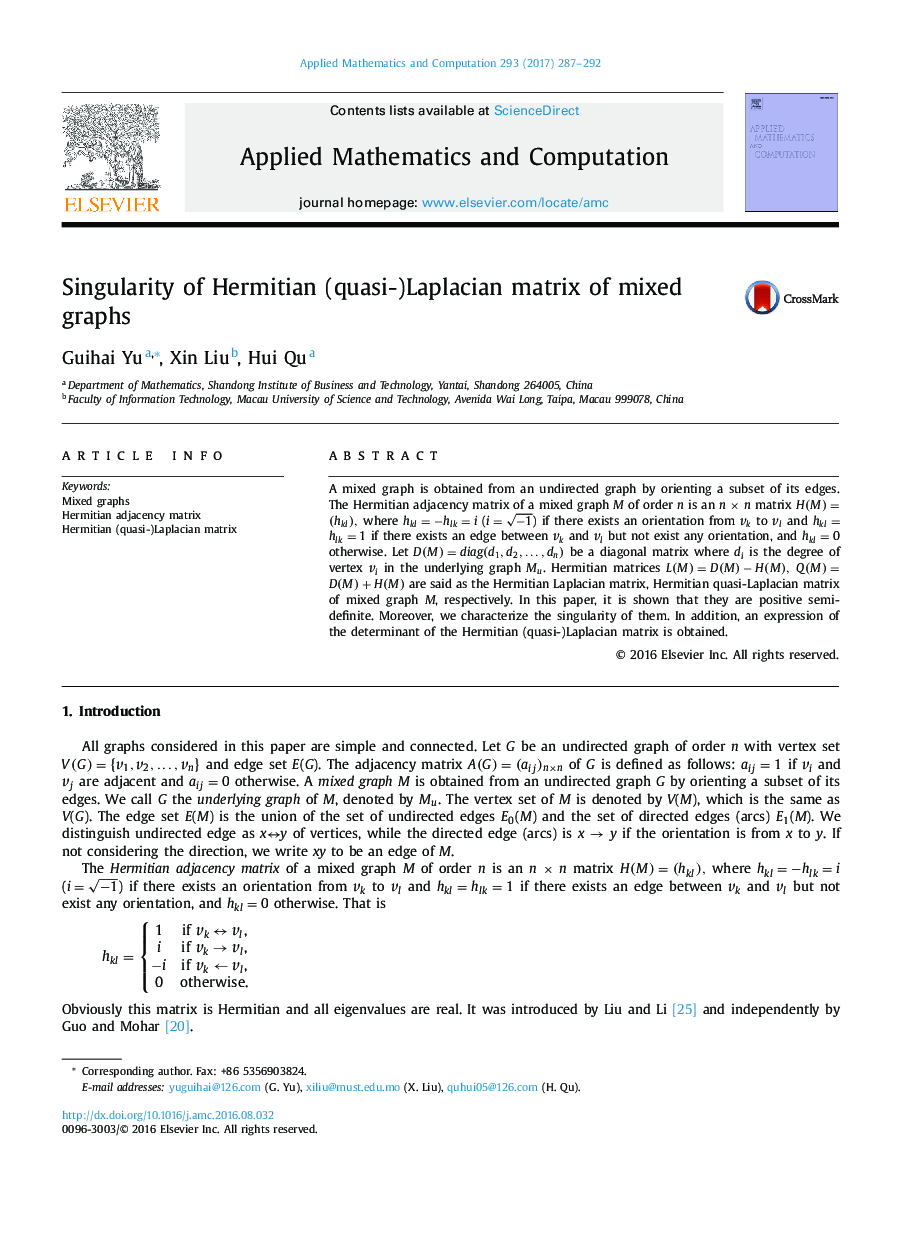| Article ID | Journal | Published Year | Pages | File Type |
|---|---|---|---|---|
| 4625573 | Applied Mathematics and Computation | 2017 | 6 Pages |
A mixed graph is obtained from an undirected graph by orienting a subset of its edges. The Hermitian adjacency matrix of a mixed graph M of order n is an n × n matrix H(M)=(hkl),H(M)=(hkl), where hkl=−hlk=ihkl=−hlk=i (i=−1) if there exists an orientation from vk to vl and hkl=hlk=1hkl=hlk=1 if there exists an edge between vk and vl but not exist any orientation, and hkl=0hkl=0 otherwise. Let D(M)=diag(d1,d2,…,dn)D(M)=diag(d1,d2,…,dn) be a diagonal matrix where di is the degree of vertex vi in the underlying graph Mu . Hermitian matrices L(M)=D(M)−H(M),L(M)=D(M)−H(M),Q(M)=D(M)+H(M)Q(M)=D(M)+H(M) are said as the Hermitian Laplacian matrix, Hermitian quasi-Laplacian matrix of mixed graph M, respectively. In this paper, it is shown that they are positive semi-definite. Moreover, we characterize the singularity of them. In addition, an expression of the determinant of the Hermitian (quasi-)Laplacian matrix is obtained.
